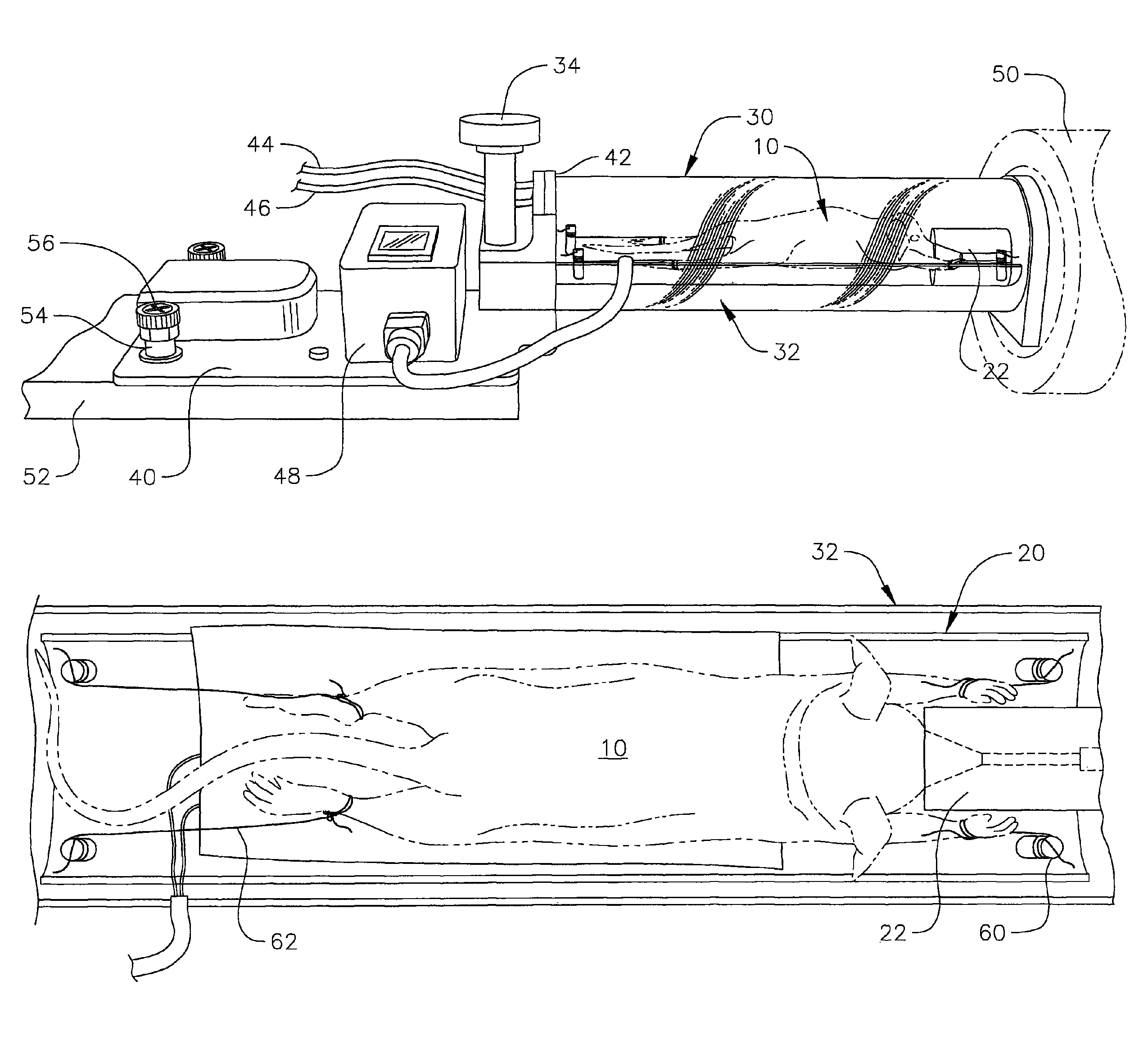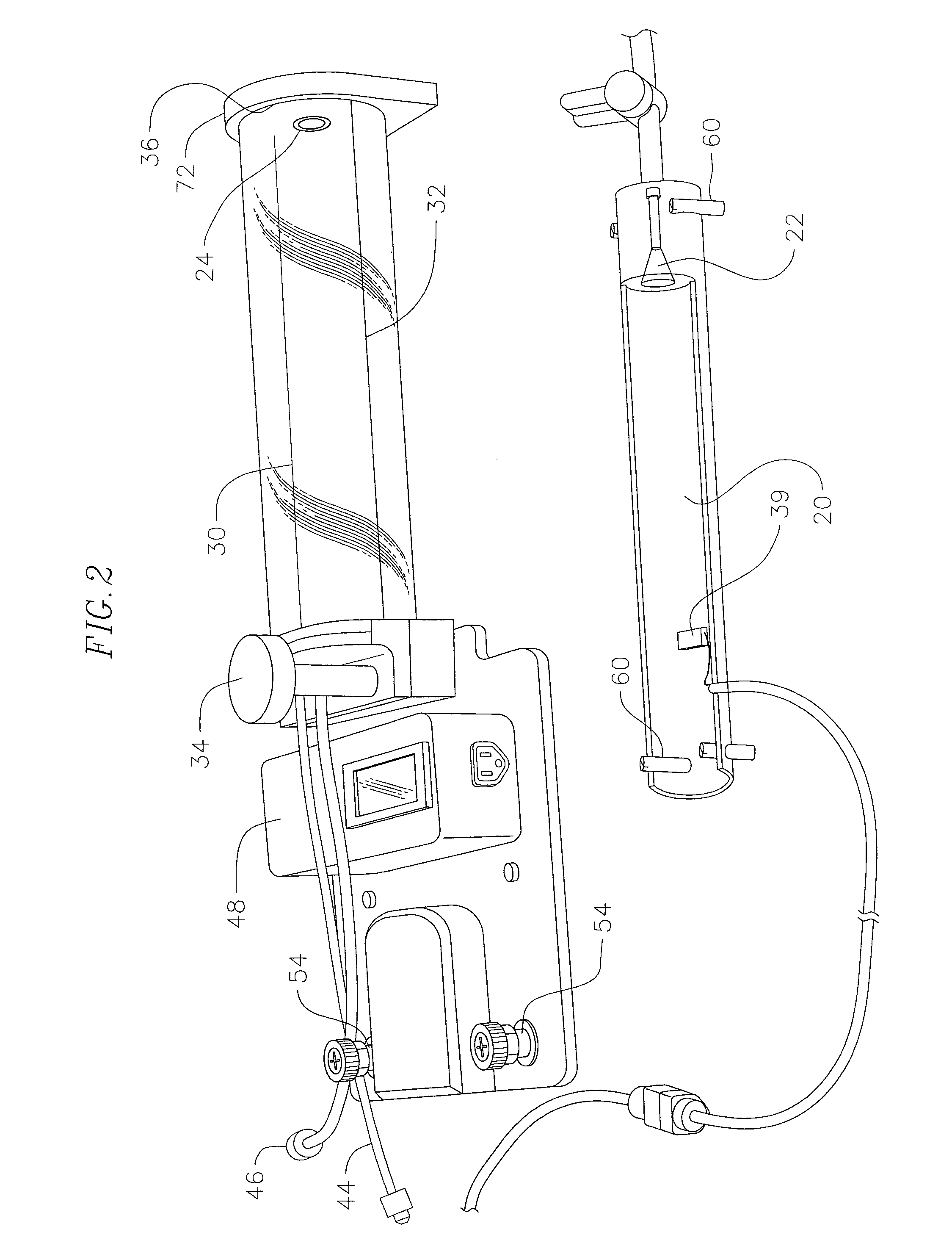Method and apparatus for animal positioning in imaging systems
a positioning method and imaging system technology, applied in the field of invivo animal imaging, can solve the problems of insufficiently providing reproducible positioning of the animal's body, no common platform for imaging animals in multiple systems, and increasing the difficulty of detection of trends over tim
- Summary
- Abstract
- Description
- Claims
- Application Information
AI Technical Summary
Benefits of technology
Problems solved by technology
Method used
Image
Examples
Embodiment Construction
[0030]One embodiment of an apparatus for imaging an animal is shown in FIG. 1. An animal 10 is supported on a bed 20 that sits within a chamber 30, 32. In this embodiment, both the chamber and the bed are acrylic, but it is within the scope of the invention to construct the chamber and bed out of any material suitable for housing and supporting the animal for imaging within the particular imaging device.
[0031]The chamber 30, 32 is fixed to a first mounting surface 40 that also includes an anesthetic delivery system 42 and a heating element control 48. The first mounting surface 40 is fixed to a second mounting surface 52 associated with a first imaging device 50. In this embodiment, the first mounting surface 40 is a metallic plate coupled to one edge of the chamber 30, 32, but it is also within the scope of the invention for the first mounting surface 40 to be any other material compatible with the imaging device 50 or a mountable surface of the bed 20 or chamber 30 itself that wil...
PUM
 Login to View More
Login to View More Abstract
Description
Claims
Application Information
 Login to View More
Login to View More - R&D
- Intellectual Property
- Life Sciences
- Materials
- Tech Scout
- Unparalleled Data Quality
- Higher Quality Content
- 60% Fewer Hallucinations
Browse by: Latest US Patents, China's latest patents, Technical Efficacy Thesaurus, Application Domain, Technology Topic, Popular Technical Reports.
© 2025 PatSnap. All rights reserved.Legal|Privacy policy|Modern Slavery Act Transparency Statement|Sitemap|About US| Contact US: help@patsnap.com



